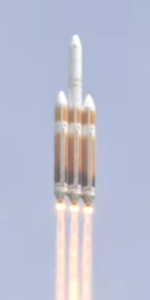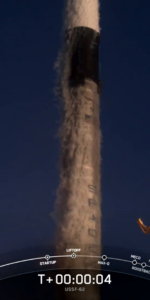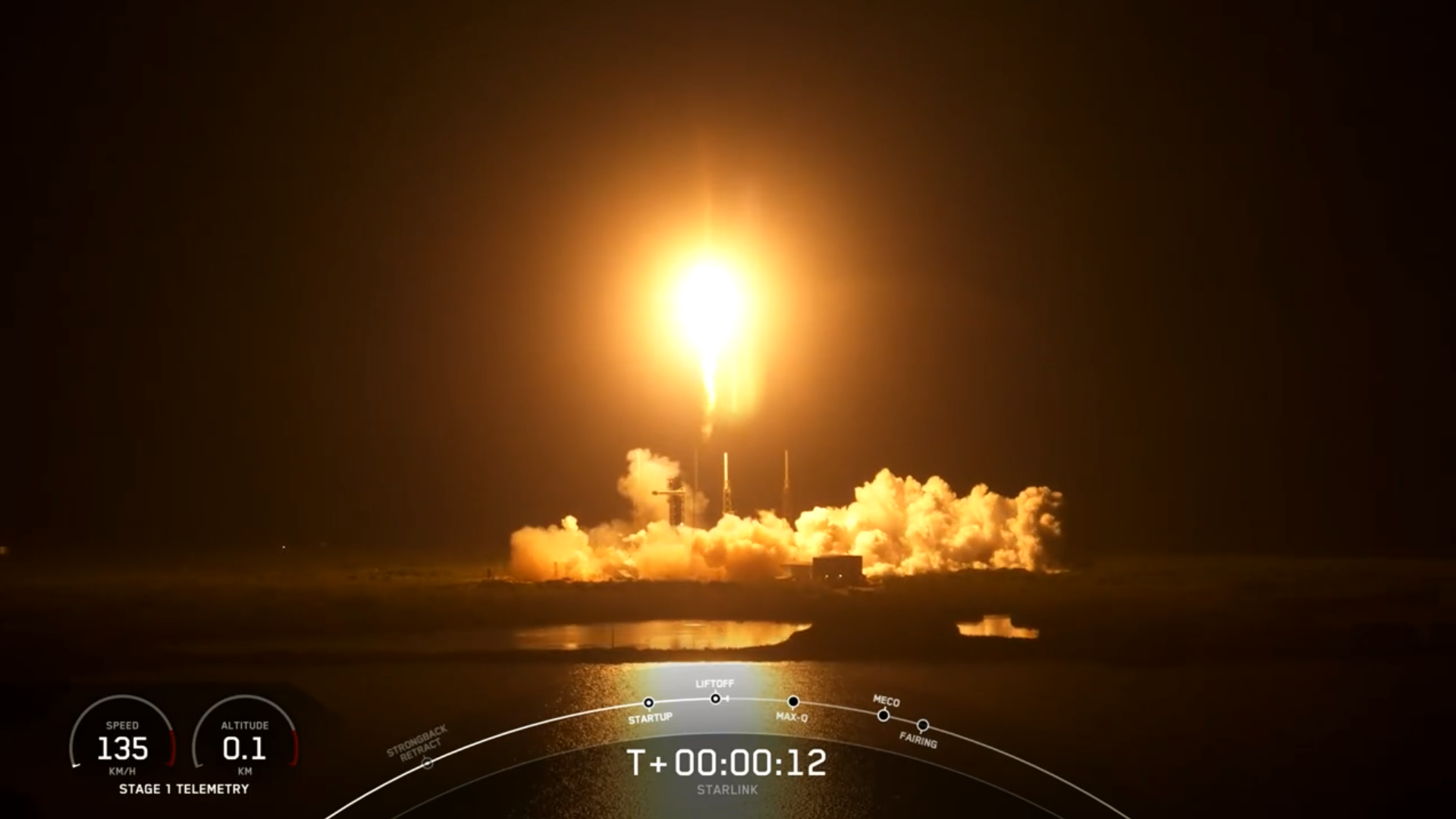
SpaceX successfully reflew a Falcon 9 out of Cape Canaveral Space Force Station, Fla., early Wednesday as the B1083 booster—previously used last month to deliver Dragon Endeavour and her Crew-8 quartet of NASA astronauts Matt Dominick, Mike Barratt and Jeanette Epps, plus Russia’s Aleksandr Grebenkin to the International Space Station (ISS)—took flight from storied Space Launch Complex (SLC)-40 at 1:40 a.m. EDT. Laden with 23 Starlink internet communications satellites bound for low-Earth orbit, the launch marked the 36th reflight of a “single-stick” Falcon 9 booster since March 2017 and the 42nd total reflight counting six others which reflew as Falcon Heavy side-boosters.
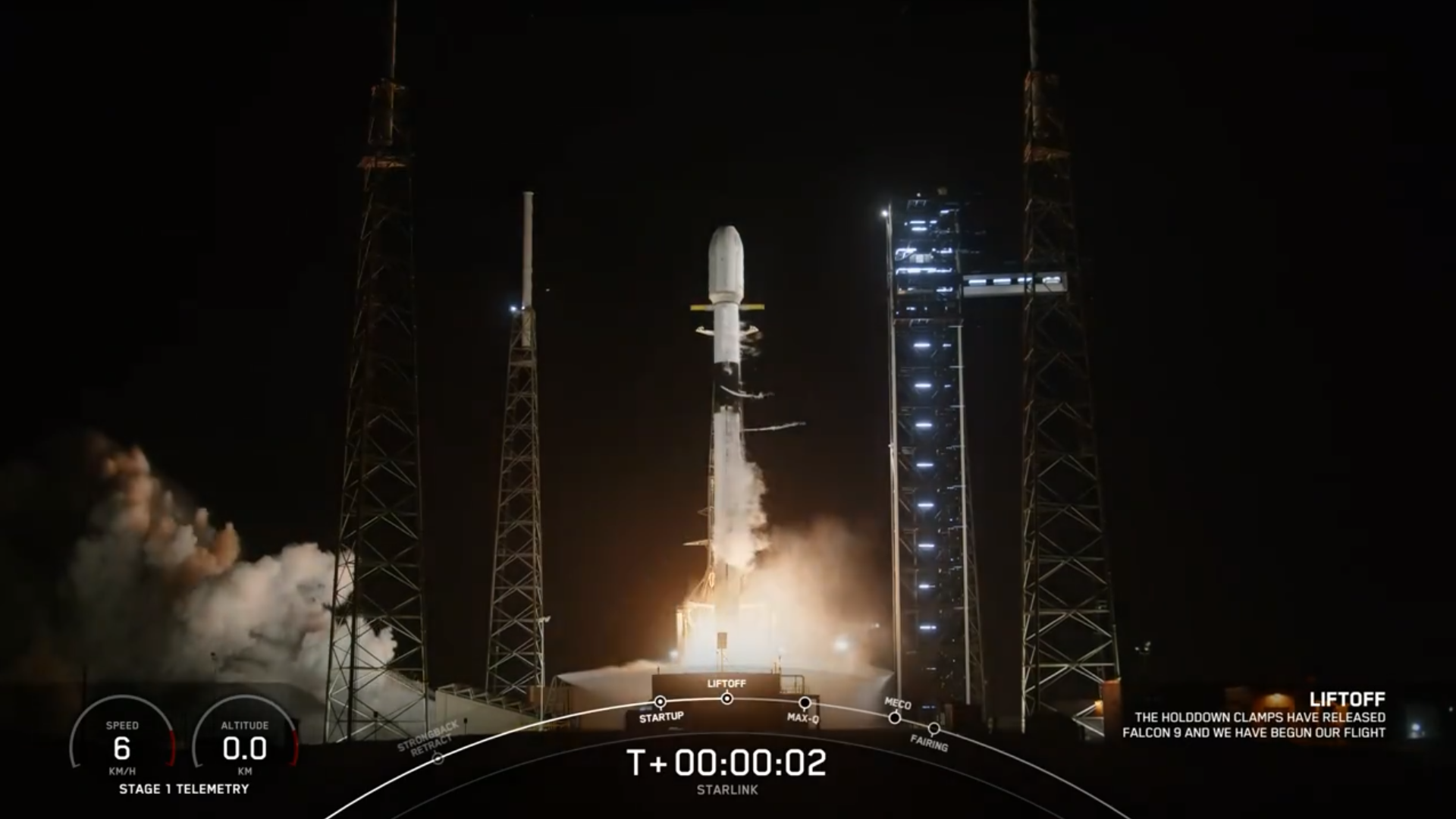
Last night’s mission formally got underway on Saturday evening, when the East Coast-based Autonomous Spaceport Drone Ship (ASDS), “Just Read the Instructions”, departed Port Canaveral, bound for a recovery position offshore in the Atlantic Ocean. Weather conditions for Wednesday’s middle-of-the-night liftoff were predicted to be calm, with a 90-percent likelihood of acceptability at T-0, which was initially targeted, according to SpaceX, for a 3.5-hour “window” from 12:04 a.m. EDT until 3:30 a.m. EDT, with backup options opening at 12:18 a.m. EDT Thursday if needed.
“Pleasant conditions will persist through Wednesday,” noted the 45th Weather Squadron at Patrick Space Force Base, citing the effects of a strong upper-level ridge of the eastern United States. “Winds will become southeasterly as the surface high-pressure moves eastward into the Atlantic. Low-level moisture will slowly increase so there is a small chance of seeing some low-topped cumulus moving off the coastal waters.”
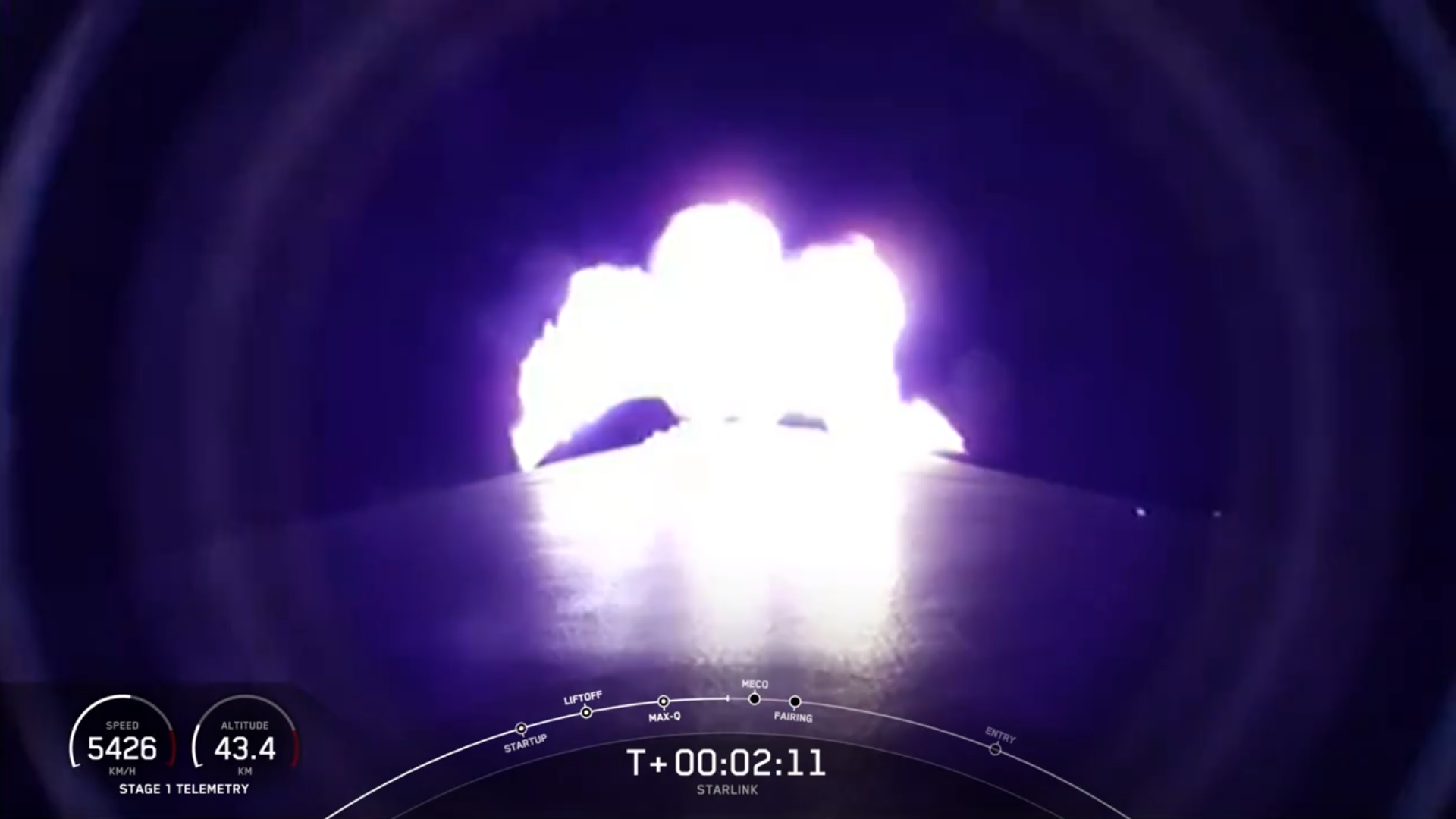
This slight risk of violating the Cumulus Cloud Rule ultimately proved inconsequential, although SpaceX teams elected to move T-0 deeper into the expansive window and aim for launch at 1:40 a.m. EDT. B1083 rose into the Florida darkness for the opening 2.5 minutes of flight under 1.7 million pounds (770,000 kilograms) of thrust from her nine Merlin 1D+ engines for the fifth Falcon 9 mission inside April’s opening ten days.
Eight minutes into the flight, with characteristic accuracy, she returned to alight on JRTI’s deck to wrap up the second mission of her career. Meanwhile, the second stage’s single Merlin 1D+ Vacuum engine ignited for six minutes to lift the 23-strong Starlink stack the rest of the way into orbit, deploying them at 65 minutes and 25 seconds after launch.
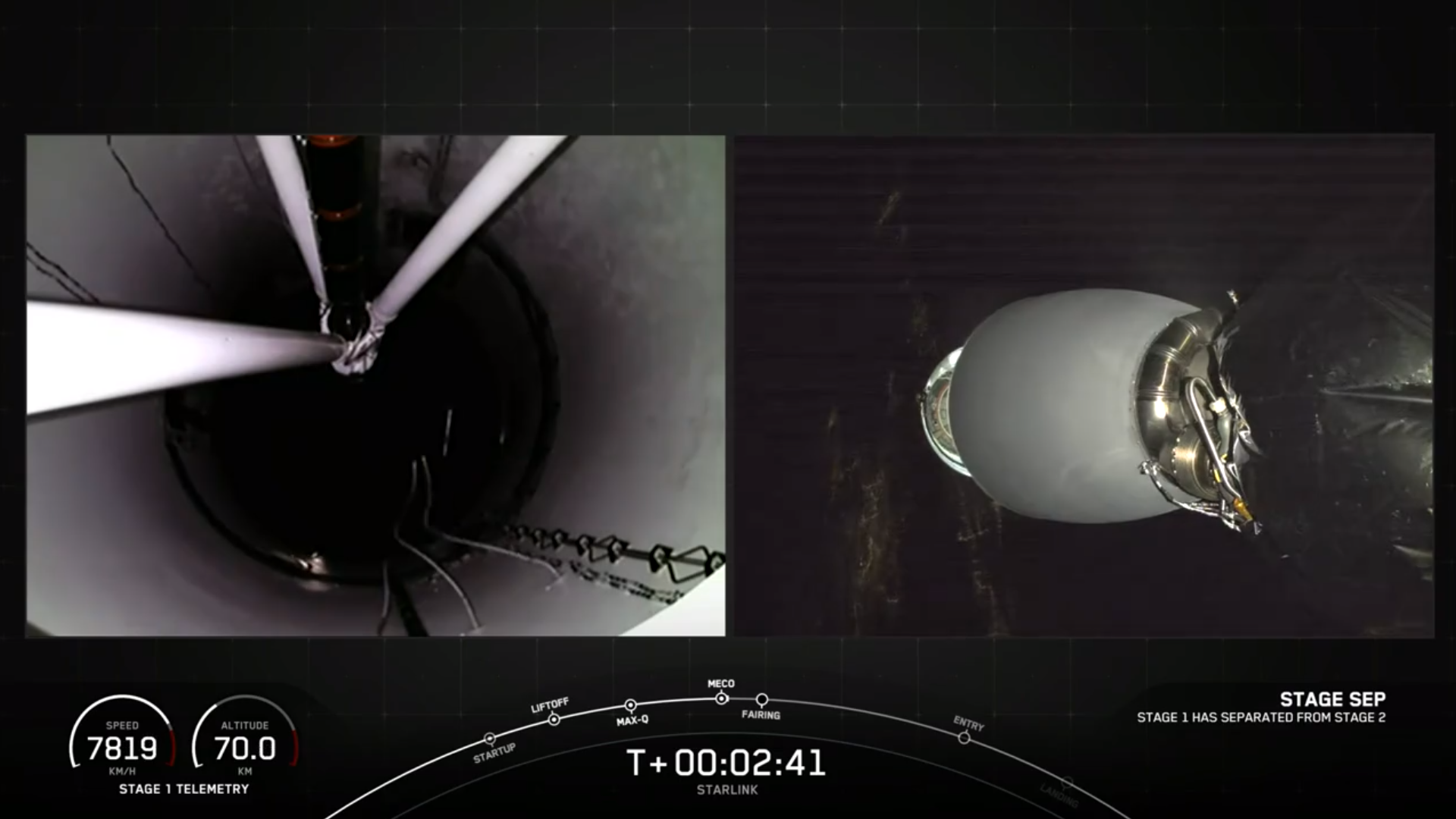
As a network, Starlink enables high-speed and low-latency internet provision to over 70 sovereign nations and international markets in North and South America, Europe, Asia, Oceania and Africa. Just yesterday, the Hawthorne, Calif.-headquartered launch services provider announced that Starlink connectivity is now available in Albania, bringing to 74 the total number of sovereign nations or regions to receive coverage.
The downsized V2 Mini satellites, first flown in February of last year, boast three to four times greater “usable” bandwidth than earlier Starlink iterations. “V2 Minis include key technologies—such as more powerful phased-array antennas and the use of E-Band for backhaul—which will allow Starlink to provide 4x more capacity per satellite than earlier iterations,” SpaceX explained. “Among other enhancements, V2 Minis are equipped with new argon Hall thrusters for on-orbit maneuvering.”
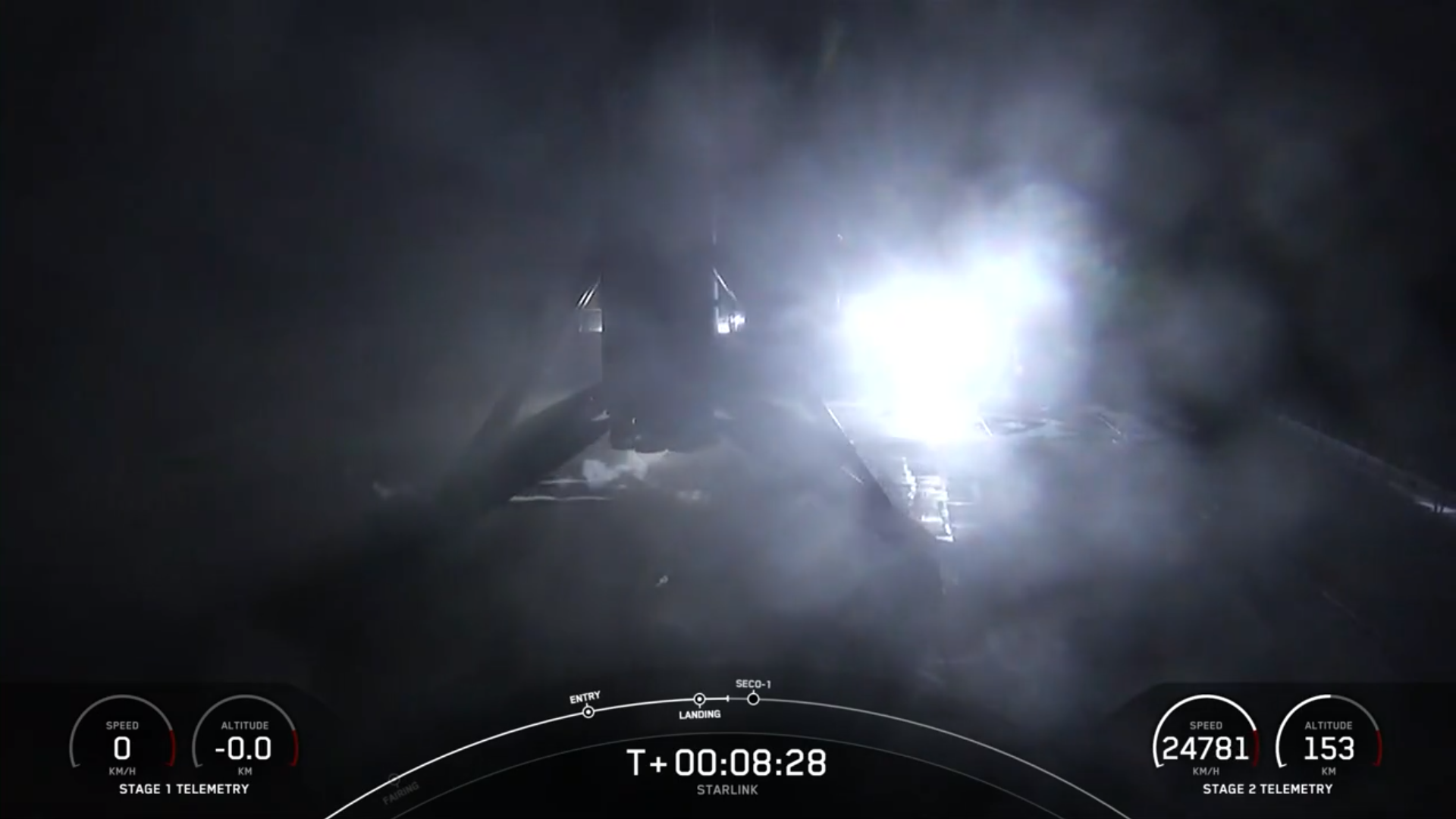
Florida-based intercity operator Brightline adopted Starlink on its trains in 2023, the first passenger rail service in the world to do so. Additionally, El Salvador’s Ministry of Education has begun integrating Starlink capability into its schools to help close the digital divide between urban and remote rural communities and 50 Rwandan schools are now connected via Starlink’s high-speed internet service.
And in January, SpaceX lofted its first six “Direct-to-Cell” Starlinks, which permit mobile network providers to offer “seamless global access to texting, calling and browsing”, whether “on land, lakes or coastal waters”, without the need to change hardware or firmware. Within six days of that first launch, SpaceX engineers sent and received their first text messages via Direct-to-Cell and as of this month Starlink reportedly has about 2.7 million registered subscribers or customers worldwide.
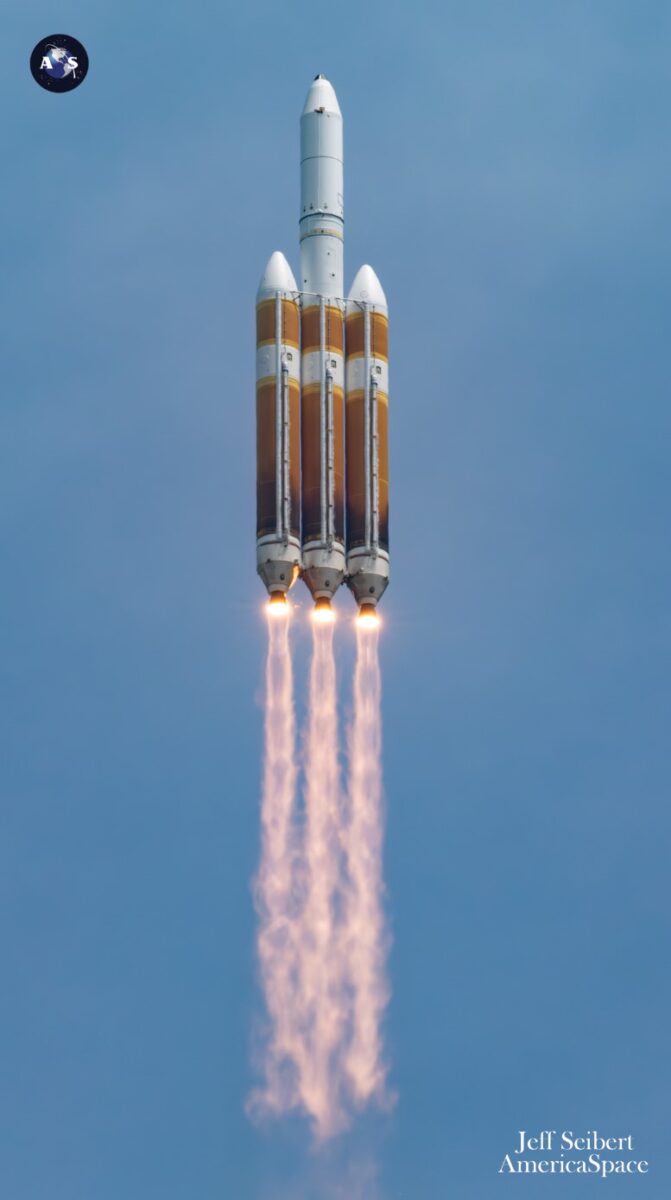
Last night’s successful flight of B1083 brings to six the total number of launches from the East and West Coasts so far in April, including Tuesday’s 12:43 p.m. EDT liftoff of the final Delta IV Heavy mission, carrying the highly classified NROL-70 payload for the National Reconnaissance Office and closing out more than six decades of Delta operational service. Added to that list, five Falcon 9 boosters that now boast over 50 flights between them have lifted exactly one hundred payloads between them, including 89 Starlinks and the 11-spacecraft Bandwagon-1 rideshare mission to a mid-inclination orbit.




